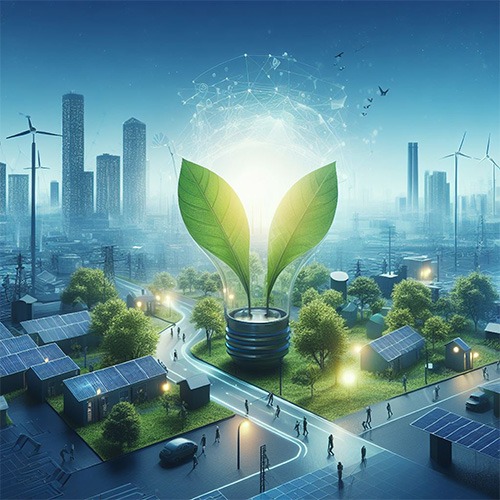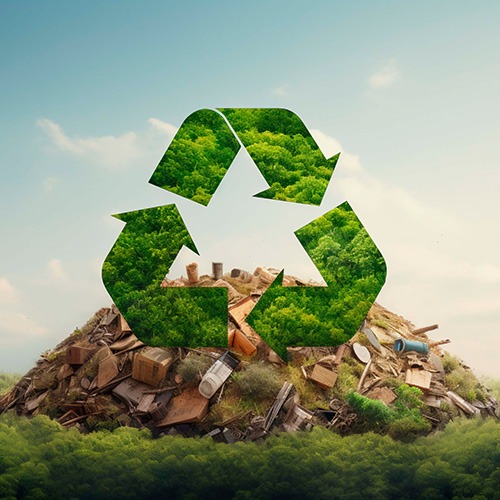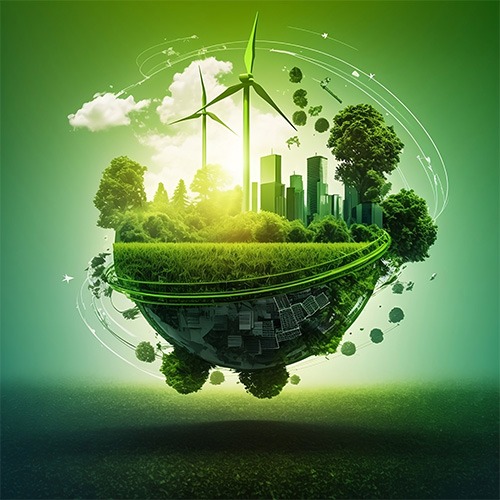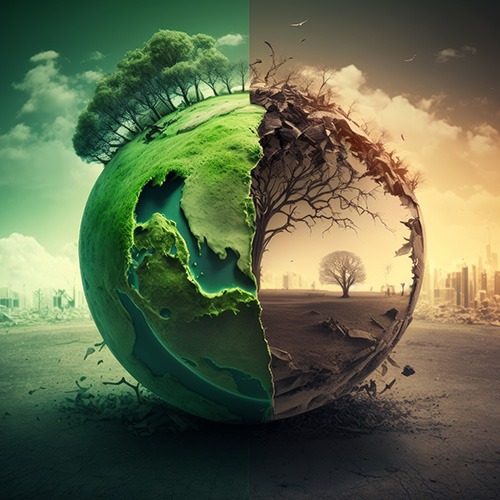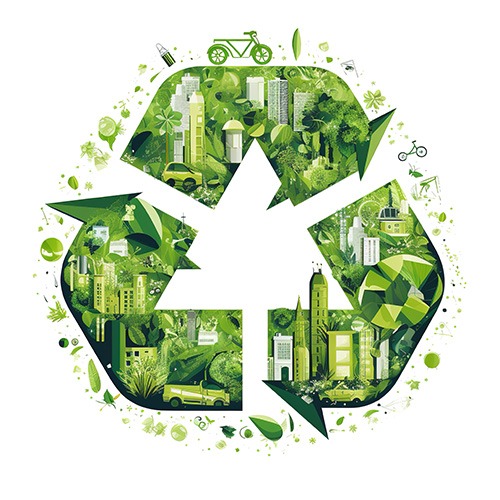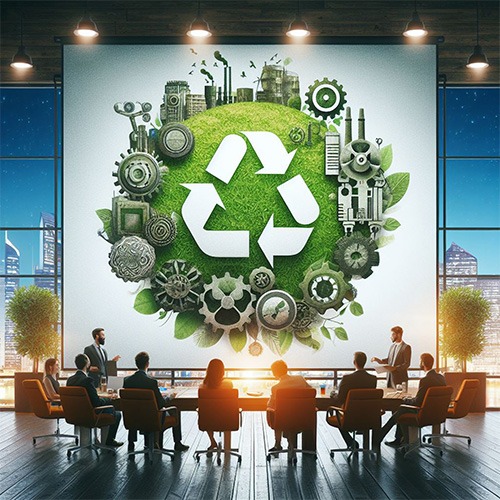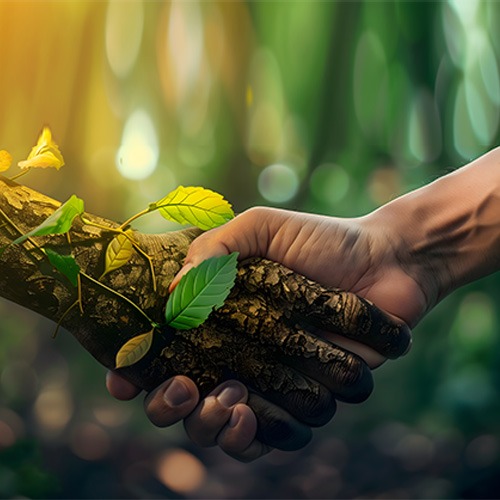Understanding Your Carbon Footprint: Let’s Calculate Together!
At Chemco Group, sustainability is at the core of everything we do. We believe a healthy planet starts with responsible businesses and informed consumers. Today, we’re taking a step towards a greener future together by helping you understand and calculate your carbon footprint.
What is a Carbon Footprint?
Your carbon footprint is the total amount of greenhouse gases, primarily carbon dioxide (CO2), that your activities generate. Reducing your carbon footprint is crucial for combating climate change. Let’s explore some key areas to consider, along with their estimated impact:
Transportation (Significant Impact)
How you get around significantly impacts your footprint. Consider these transportation options and their effects:
- Train Commute:
- Crowded Train (Higher Footprint): During peak hours, crowded trains can be less efficient due to increased energy consumption for maintaining higher speeds and frequent stops. Assuming an average emission of 0.1 kg CO2 per passenger kilometer, if your daily commute distance (round trip) is 20 kilometers, your annual footprint from crowded trains would be:0.1 kg/km×20 km/day×250 working days/year=500 kg CO2/year or 0.5 metric tons of CO2
- Less Crowded Train (Lower Footprint): Traveling during off-peak hours can improve efficiency, resulting in lower emissions. Assuming the same emission factor of 0.1 kg CO2 per passenger kilometer, the annual footprint remains the same at:0.1 kg/km×20 km/day×250 working days/year=500 kg CO2/year or 0.5 metric tons of CO2
- Car Commute:
- Single Occupancy Vehicle (Higher Footprint): Driving alone in a car significantly increases your carbon footprint. For example, a car emitting an average of 0.2 kg CO2 per kilometer, with the same daily commute distance, results in:0.2 kg/km×20 km/day×250 working days/year=1,000 kg CO2/year or 1 metric ton of CO2
- Carpooling (Lower Footprint): Sharing your ride with others can reduce your carbon footprint per passenger. Carpooling with three other people (four passengers total) would reduce your share of emissions to:41,000 kg CO2/year=250 kg CO2/year
- Walking/Cycling (Zero Footprint): If feasible, consider walking or cycling to eliminate carbon emissions entirely. This is the most sustainable option for short commutes, contributing zero CO2 emissions.
Energy Consumption (High Impact)
Reducing your home’s energy usage is key. Here’s how your daily habits can affect your footprint:
- Action: Switching Off Lights and Electronics: Switching off lights and electronics when not in use can save around 100 kg of CO2 per year.
- Action: Using Energy-Efficient Appliances: Using energy-efficient appliances like LED bulbs and A/C units can save up to 1,000 kg of CO2 annually.
To calculate your total footprint from energy consumption, check your monthly electricity bill and multiply it by 12. Research the average carbon emission factor for your region (e.g., kg CO2 per kWh) and multiply to estimate annual emissions. This information is often available on government websites or environmental agencies such as the U.S. Environmental Protection Agency (EPA) or European Environment Agency (EEA).
Food Choices (Moderate Impact)
Did you know your diet plays a role in your carbon footprint? Opting for plant-based meals and locally sourced produce can significantly lower your carbon footprint. Here’s a rough estimate:
- Meat-Heavy Diet: A meat-heavy diet can emit around 1.5 metric tons of CO2 per year.
- Plant-Based Diet: A plant-based diet can be as low as 0.7 metric tons of CO2 per year.
Utilizing online carbon footprint calculators like this one can help you get a more personalized estimate.
Fast Fashion and Other Consumption (High Impact)
Fast fashion is a major culprit when it comes to carbon footprint. The production of a single cotton t-shirt can emit around 8.1 kg of CO2, while a pair of jeans can emit a whopping 33.4 kg of CO2. Opt for sustainable and ethical fashion brands or choose second-hand clothes to reduce your impact. Additionally, be mindful of impulse purchases and focus on buying high-quality, long-lasting items. Resisting the urge for that trendy new outfit you might only wear a few times can make a big difference.
Mindful Consumption (Moderate Impact)
Every purchase counts! By choosing sustainable and ethically-made products with minimal packaging, you can make a significant impact on your carbon footprint. Here are some practical examples to guide you:
- Action: Buy Less, Choose Well: Buying one less new garment each year can save around 33 kg of CO2. For instance, opting out of purchasing a new synthetic fabric jacket, which typically has a high carbon footprint due to production and transportation, can make a big difference. Instead, consider investing in high-quality, long-lasting clothing or purchasing second-hand items.
- Action: Use Reusables: Opting for reusable water bottles, shopping bags, and other daily items can significantly reduce plastic waste and your overall carbon footprint. For example, using a reusable water bottle can prevent the production and disposal of approximately 167 single-use plastic bottles annually, saving about 10 kg of CO2 emissions. Similarly, a reusable shopping bag can replace up to 500 single-use plastic bags each year, saving another 1 kg of CO2.
How to Calculate Your Overall Footprint
While the exact calculations can be complex, here’s a simplified approach to get you started:
- Transportation: Track your daily travel distance and mode of transport. Multiply by the respective emission factor (e.g., kg CO2 per km) and sum up for the year.
- Energy Consumption: Check your monthly electricity bill, multiply by 12, and then multiply by the carbon emission factor for your region.
- Food Choices: Estimate based on your diet (meat-heavy, vegetarian, plant-based) and multiply by the average annual emissions.
- Consumption Habits: Consider the carbon footprint of your purchases, focusing on major items like clothing, electronics, and household goods.
By understanding and calculating your carbon footprint, you can take meaningful steps towards reducing it. Together, let’s make a positive impact on our planet. For more personalized estimates and detailed guidance, visit our resources and tools on the Chemco Group website.
Calculate Your Carbon Footprint
For a more personalized estimate, use this online carbon footprint calculator.
Join us in our mission to create a sustainable future! Start by calculating your carbon footprint today and take proactive steps to reduce it. Share your progress with us on social media using #ChemcoGreen, and inspire others to make a difference. Together, we can build a healthier planet for future generations.
For more tips and resources on sustainability, follow us on social media and stay connected with Chemco Group. Let’s make every action count!























